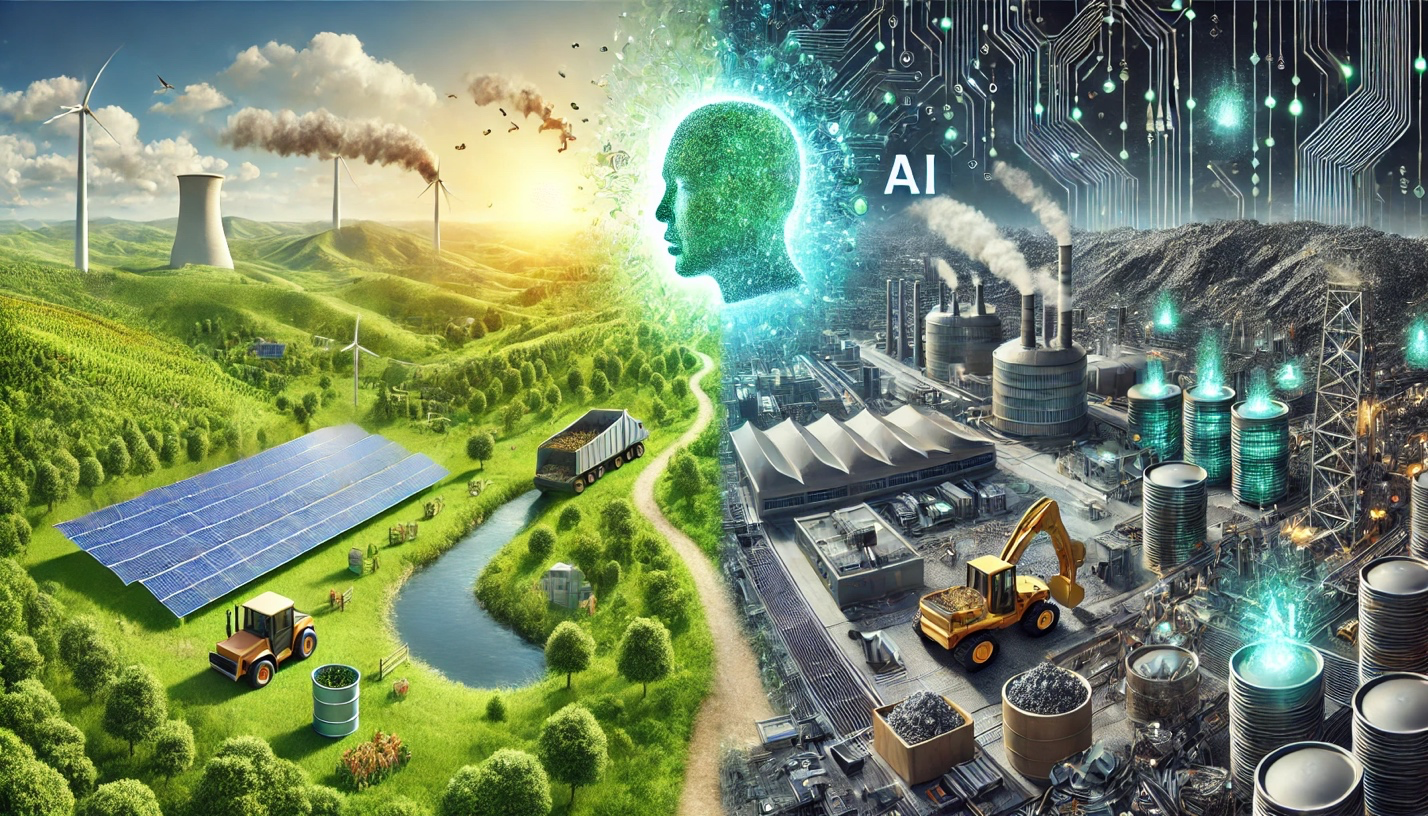The Hidden Costs of AI in Ecology: Environmental and Ethical Impact

Artificial Intelligence (AI) is often hailed as a powerful tool in the fight against climate change. From tracking deforestation to predicting extreme weather, AI promises smart, fast, and scalable solutions. Tech companies promote their green innovations proudly—but behind the hype lies a more complex and troubling story.
The integration of Artificial Intelligence (AI) into ecology and labor efforts is often promoted as a revolutionary step toward solving climate challenges. From optimizing resource use to tracking biodiversity, AI is praised for its potential to drive sustainable solutions. However, this techno-optimism tends to overlook serious ecology and ethical issues. This article critically examines both the environmental impact of AI and the human cost behind its development—particularly the exploitation of data workers in the Global South.
This article uncovers the hidden costs of AI: the environmental damage caused by massive infrastructure and the exploitation of underpaid workers, especially in the Global South.
🌱 AI for Ecology—A Perfect Solution?
AI is being used in exciting ways to support the planet. Tools developed by ClimateAI and Planet Labs help scientists and policymakers monitor ecosystems, detect wildfires, and optimize agriculture.
But here’s the catch: many of these systems are designed in idealized lab settings, far from the challenges on the ground. AI often relies on incomplete or biased data, which can lead to misleading or even harmful decisions. Meanwhile, simple and effective local solutions like reforestation or community-led conservation often receive less attention or funding.
⚡ Dirty Data: The Environmental Impact of AI
AI may be digital, but it’s far from clean. It runs on massive computing infrastructure that consumes huge amounts of electricity.
A study from the University of Massachusetts Amherst found that training just one large AI model like GPT-3 can emit over 500 tons of CO₂—as much as five cars in their entire lifetime.
AI hardware also depends on rare earth metals, mined in ways that cause deforestation, pollution, and toxic waste, according to National Geographic. Plus, the fast-paced tech cycle results in massive e-waste, adding to the ecological burden.
🧠 The Human Cost: Who’s Teaching AI?
Behind every “smart” AI is a team of real people labeling data, often for extremely low wages. Many of these workers are based in Kenya, the Philippines, or Venezuela—far from the headquarters of tech giants.
According to a TIME Magazine investigation, Kenyan workers labeling content for ChatGPT were paid as little as $1.32/hour. They reviewed violent, graphic content with no proper mental health support.
Similarly, The Guardian reported that Facebook content moderators in Kenya were exposed to traumatic material, resulting in serious psychological damage.
This system reflects a kind of digital colonialism, where cognitive labor is outsourced to low-income countries while the profits and recognition remain in the West.
🌀 A False Solution?
AI is not a green miracle. It’s energy-intensive, resource-heavy, and built on global labor inequalities. Promoting AI as the hero of climate action risks creating a tech façade that hides deeper ethical and environmental issues.
✅ What Needs to Change?
If we want AI to contribute positively to climate solutions, we must ensure:
🌞 Use of renewable energy to power AI
🔎 Access to transparent, open datasets
💵 Fair wages and support for data workers
🌍 Investment in local, community-led climate projects
🧭 Final Thoughts: Ethics Over Hype
Yes, AI has potential. But real sustainability requires more than clever code. It demands ethical labor practices, transparent systems, and ecological awareness.
If we don’t ask “Who pays the price for this technology?”, we risk building systems that solve one problem by creating another.
Note: Those texts are also generated with support from AI 🙂 Image source.


👏🏻